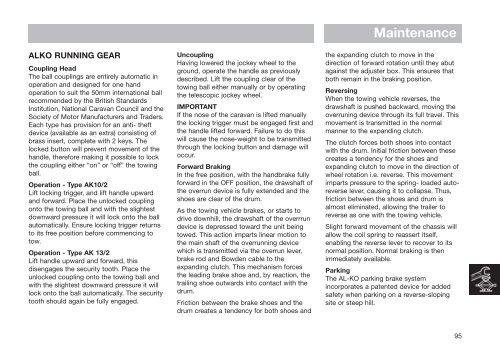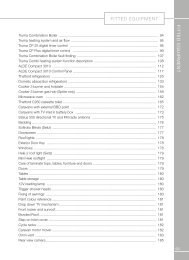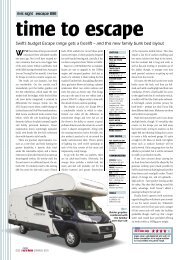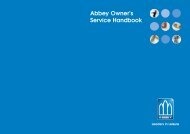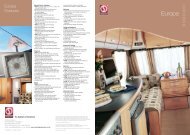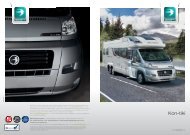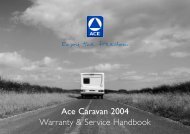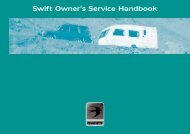Swift Owner's Handbook - Swift Group
Swift Owner's Handbook - Swift Group
Swift Owner's Handbook - Swift Group
- No tags were found...
You also want an ePaper? Increase the reach of your titles
YUMPU automatically turns print PDFs into web optimized ePapers that Google loves.
ALKO RUNNING GEARCoupling HeadThe ball couplings are entirely automatic inoperation and designed for one handoperation to suit the 50mm international ballrecommended by the British StandardsInstitution, National Caravan Council and theSociety of Motor Manufacturers and Traders.Each type has provision for an anti- theftdevice (available as an extra) consisting ofbrass insert, complete with 2 keys. Thelocked button will prevent movement of thehandle, therefore making it possible to lockthe coupling either “on” or “off” the towingball.Operation - Type AK10/2Lift locking trigger, and lift handle upwardand forward. Place the unlocked couplingonto the towing ball and with the slightestdownward pressure it will lock onto the ballautomatically. Ensure locking trigger returnsto its free position before commencing totow.Operation - Type AK 13/2Lift handle upward and forward, thisdisengages the security tooth. Place theunlocked coupling onto the towing ball andwith the slightest downward pressure it willlock onto the ball automatically. The securitytooth should again be fully engaged.UncouplingHaving lowered the jockey wheel to theground, operate the handle as previouslydescribed. Lift the coupling clear of thetowing ball either manually or by operatingthe telescopic jockey wheel.IMPORTANTIf the nose of the caravan is lifted manuallythe locking trigger must be engaged first andthe handle lifted forward. Failure to do thiswill cause the nose-weight to be transmittedthrough the locking button and damage willoccur.Forward BrakingIn the free position, with the handbrake fullyforward in the OFF position, the drawshaft ofthe overrun device is fully extended and theshoes are clear of the drum.As the towing vehicle brakes, or starts todrive downhill, the drawshaft of the overrrundevice is depressed toward the unit beingtowed. This action imparts linear motion tothe main shaft of the overrunning devicewhich is transmitted via the overrun lever,brake rod and Bowden cable to theexpanding clutch. This mechanism forcesthe leading brake shoe and, by reaction, thetrailing shoe outwards into contact with thedrum.Friction between the brake shoes and thedrum creates a tendency for both shoes andMaintenancethe expanding clutch to move in thedirection of forward rotation until they abutagainst the adjuster box. This ensures thatboth remain in the braking position.ReversingWhen the towing vehicle reverses, thedrawshaft is pushed backward, moving theoverruning device through its full travel. Thismovement is transmitted in the normalmanner to the expanding clutch.The clutch forces both shoes into contactwith the drum. Initial friction between thesecreates a tendency for the shoes andexpanding clutch to move in the direction ofwheel rotation i.e. reverse. This movementimparts pressure to the spring- loaded autoreverselever, causing it to collapse. Thus,friction between the shoes and drum isalmost eliminated, allowing the trailer toreverse as one with the towing vehicle.Slight forward movement of the chassis willallow the coil spring to reassert itself,enabling the reverse lever to recover to itsnormal position. Normal braking is thenimmediately available.ParkingThe AL-KO parking brake systemincorporates a patented device for addedsafety when parking on a reverse-slopingsite or steep hill.95


